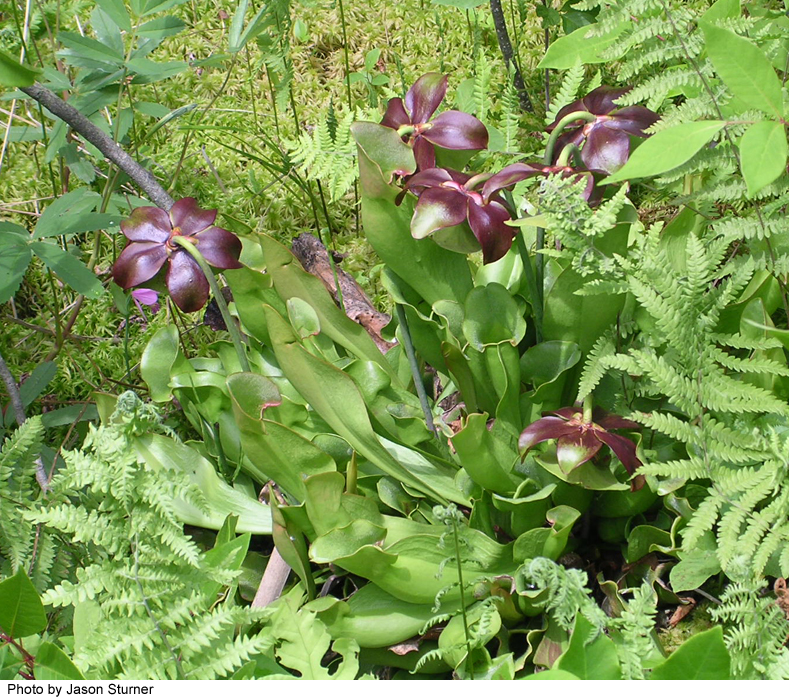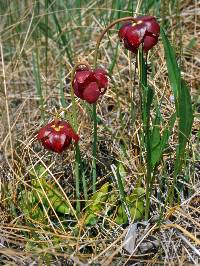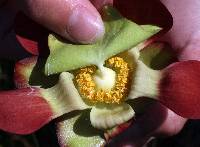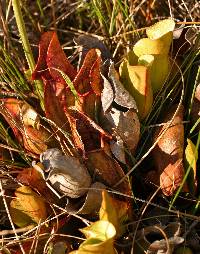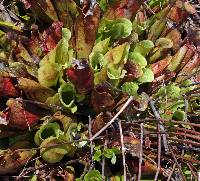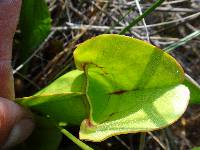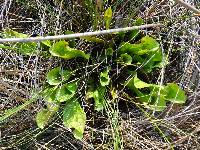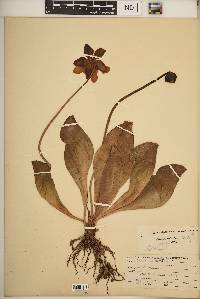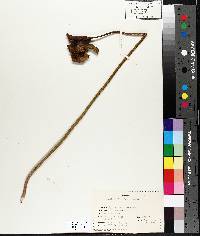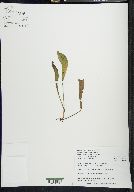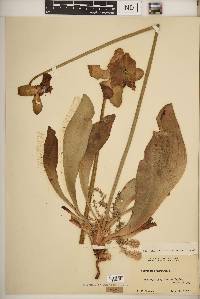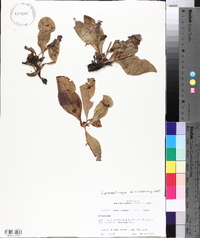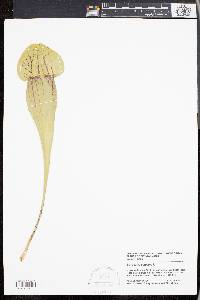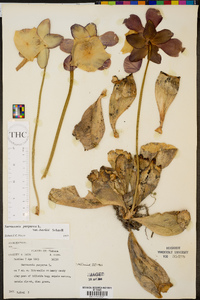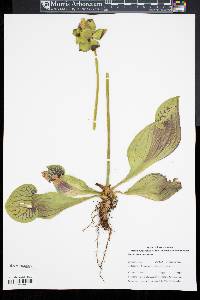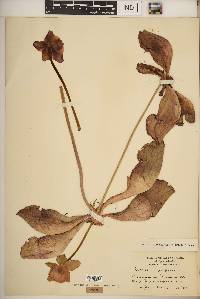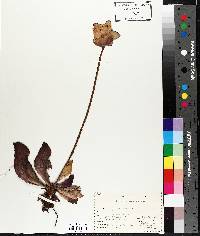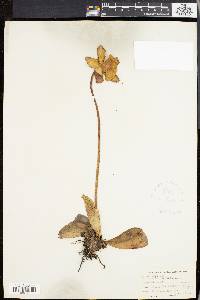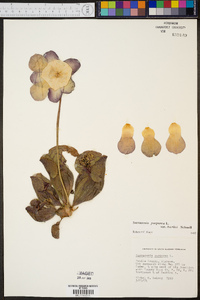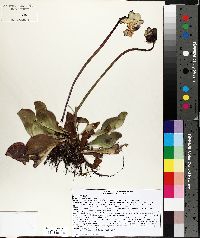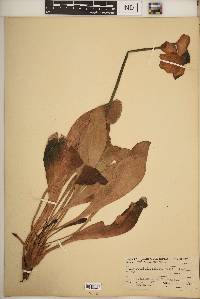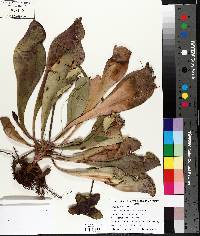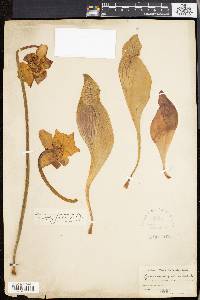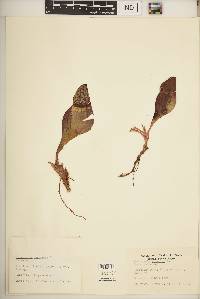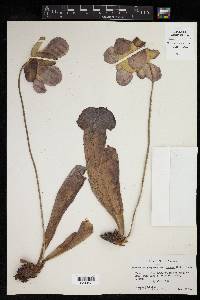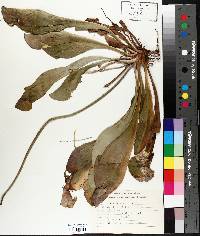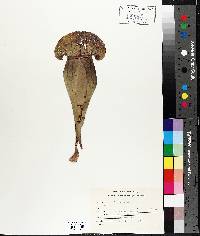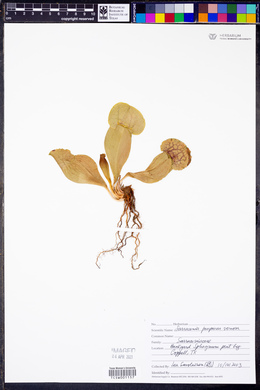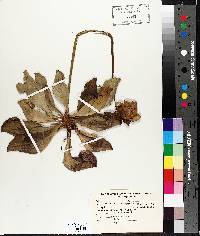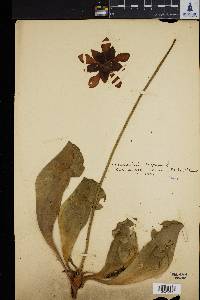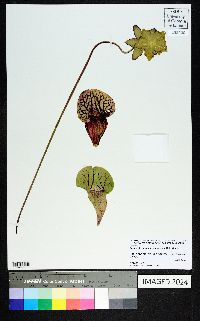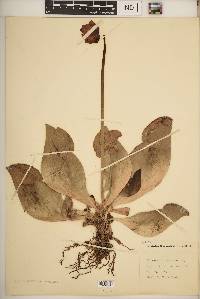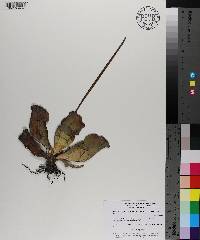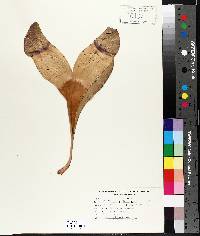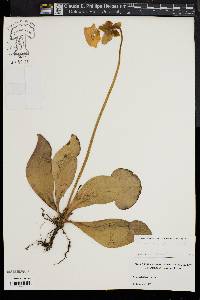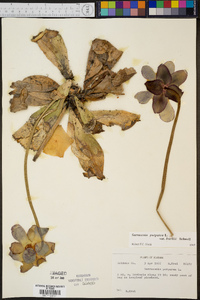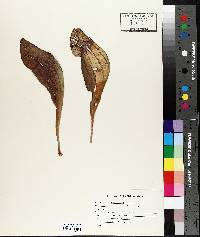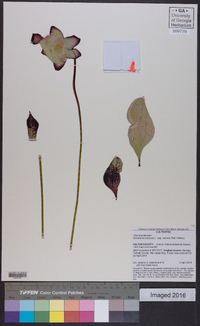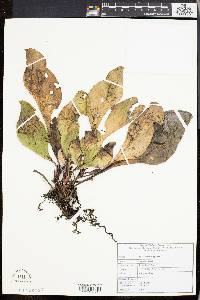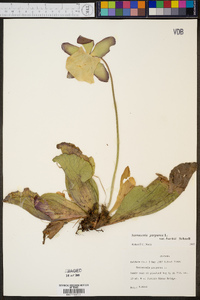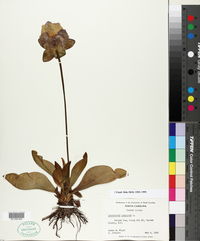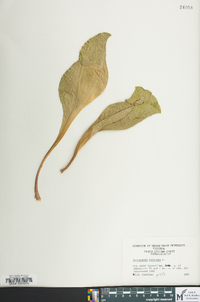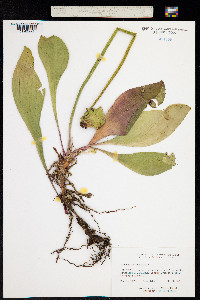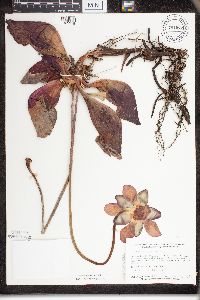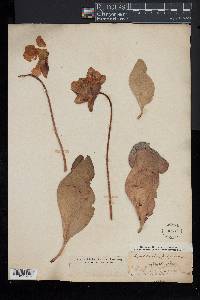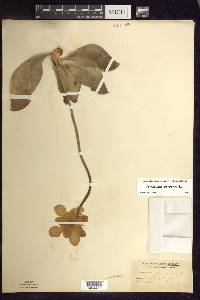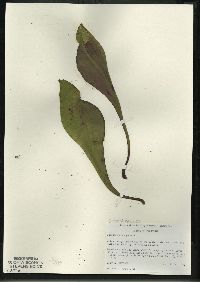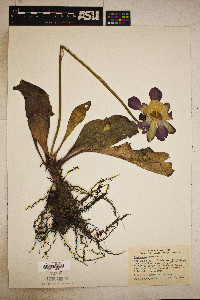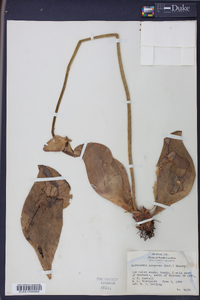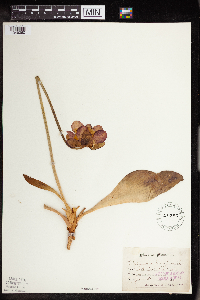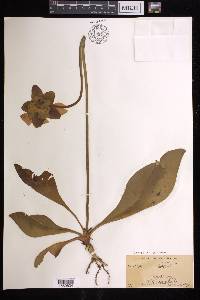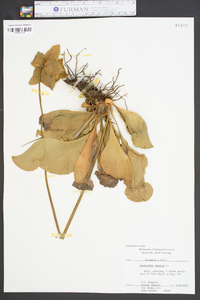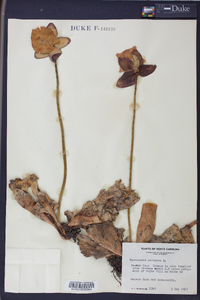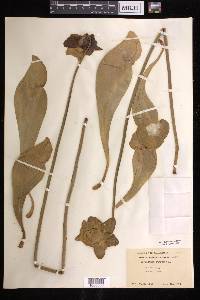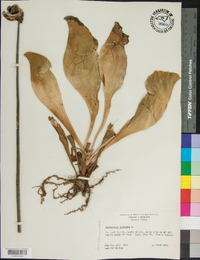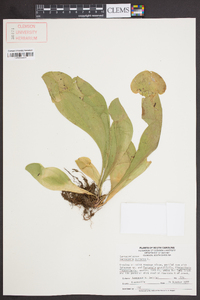Sarracenia purpurea
|
|
|
|
Family: Sarraceniaceae
more...Purple Pitcherplant
|
Plants forming dense clumps; rhizomes 0.3-1.5 cm diam. Pitchers persistent, appearing with or after flowers and continuously all summer, decumbent or sprawling to ascending, nearly green with various degrees of red or purple veins, or suffused reddish or purplish to nearly uniformly purplish red, without white areolae, urceolate (gently S-curved like a hunter´s horn), 5-25(-45) cm (bulging distal of middle, 3-6 cm at widest point), firm, sometimes shiny or waxy, external surface glabrous or glabrate to densely pubescent, wings 1-3(-4) cm diam.; orifice round to oval, (gaping, with rainwater held in pitcher), 1.4-3.6 cm wide, rim green to purplish red, (thick, flaring), loosely revolute, scarcely or not indented distal to wing, (0.7-3.1 mm wide at thickest point); hood erect or with lobes arched together over orifice, same colors and veined as pitcher, reniform, undulate or entire, 2-5 × 3-7 cm, wider than long, basal lobes cordate, attached to sides of rim of orifice with no neck, distal portion somewhat abaxially recurved and notched apically, apex not apiculate, adaxial surface with decurved setae 0.6-1.8(-3) mm. Phyllodia absent. Scapes 22-79 cm, much longer than pitchers; bracts 0.5-0.8 cm. Flowers moderately fragrant to mixed fragrant and ill-scented; sepals purplish red, 2.2-4.2 × 1.5-3.5 cm; petals red to maroon, distal portion elliptic to obovate, 3.3-5.3 × 1.5-3 cm, margins entire; style disc green, 4-5 cm diam., (style arms 1.7-3.8 cm). Capsules 1-2 cm diam. Seeds 1.7-2 mm. 2n = 26. Sarracenia purpurea is probably the most recognized of the pitcher plants. It has rapidly and effectively populated peat bogs in the northern regions during the 10,000-12,000 years since glaciation. It is the only pitcher plant that grows naturally north of southeastern Virginia; in North America, it has become naturalized at least in northern California and the Pacific Northwest. While it may be the stereotypical pitcher plant to the general public, it is atypical of Sarracenia species in that it, along with S. rosea, holds rainwater. Within Sarracenia purpurea, there is much overlap of character states among the infraspecific taxa, and there are always exceptions and problematic specimens, especially where they may hybridize with other species in the Carolinas. See D. E. Schnell (1979, 1981) for further discussion of variants. C. R. Bell (1949), S. McDaniel (1971), and A. M. Ellison et al. (2004) did not accept the subspecies designations presented by E. T. Wherry (1933, 1972); we believe that there are sufficient morphological distinctions that are substantiated by observations made in uniform garden culture (Case, pers. obs.; Schnell 1979) to recognize subspecies.
Perennial herb 20 cm - 0.6 m tall Leaves: basal, stalked, reddish green, often purple-veined, 10 - 30 cm long, 1 - 5 cm wide, and modified into an inflated, hollow, lipped "pitcher." Terminal lip broad, with stiff downward-pointing hairs on the inside. Fruit: a capsule with winged seeds. Flower: solitary, on a 10 - 40 cm tall leafless stalk, nodding, 5 - 7 cm wide. Sepals five, yellowish green to purplish red, petal-like. Petals five, purplish red. Stamens numerous. Style umbrella-like. Petals fall off early but the sepals remain. Similar species: This plant is unmistakable and has no relatives in the Chicago Region. Flowering: mid-May to early June Habitat and ecology: Local in Sphagnum bogs. Although usually found in acidic habitats, it also occurs in alkaline habitats. Occurence in the Chicago region: native Notes: Sarracenia purpurea is a carnivorous plant, consuming insects, isopods, spiders, mites, and occasionally small frogs. The pitcher-shaped leaves collect water, and organisms entering them have difficulty crawling out because of the down-curved hairs growing inside. Eventually the organism falls into the water and drowns. Enzymes secreted by the plant help with digestion, although much of the breakdown is a result of bacterial activity. The plant then absorbs the nutrients. Etymology: Sarracenia is named after Dr. D. Sarrasin, a 17th Century French physician and botanist from Quebec who sent the first of these plants to Europe. Purpurea means purple. Author: The Morton Arboretum Lvs 1-2 dm, obovoid, the wing semi-elliptic to semi-oblanceolate, usually 1-5 cm wide, the hood sessile by a very broad base; scapes 3-5 dm; fls 5-7 cm wide, the pet dark red-purple or rarely yellowish; 2n=26. Sphagnum-bogs, sandy or marly shores, and other wet places; Lab. and Nf. to n. Fla. and s. La., restricted to the coastal states southward, but far inland n. of the glacial boundary, to Man., Minn., n. Ill., Ind., and O. May-Aug. Two rather weak geographic vars.: var. purpurea, northern, s. to Md., Del., and N.J., with pitchers more than 3 times as long as wide, usually glabrous outside, the pet deep maroon to occasionally red; and var. venosa (Raf.) Fernald, southern, n. to Md., Del. and N.J., with pitchers less than 3 times as long as wide, usually bristly outside, the pet mostly bright red to pink. (S. venosa) Gleason, Henry A. & Cronquist, Arthur J. 1991. Manual of vascular plants of northeastern United States and adjacent Canada. lxxv + 910 pp. ©The New York Botanical Garden. All rights reserved. Used by permission. |
|
|
|

